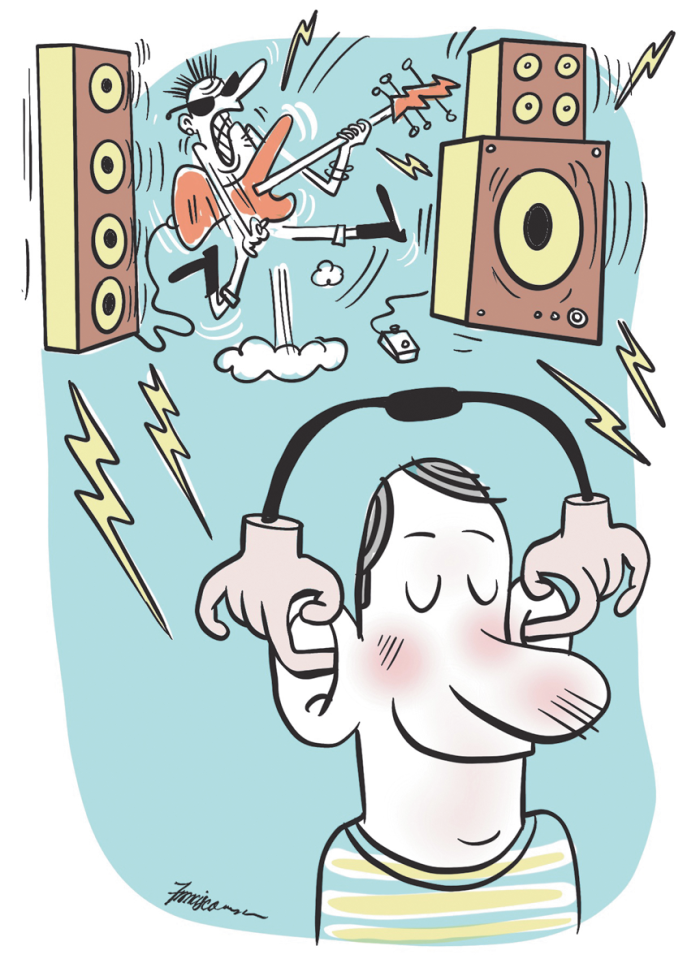The Straits Times (13 April 2022)
Mr L, who is in his mid-30s, came to my clinic after having ringing sounds in both his ears (tinnitus) for two years.
He had become accustomed to the tinnitus, but was concerned that conversations sounded muffled to him in noisy environments, especially in mask-on settings. On further inquiry, he admitted to a routine of listening to loud music via headphones since his teenage years.
Mr K, a retiree in his late 60s, saw me with a complaint of hearing loss for more than 30 years. He attributed it to working in the marine industry, where he was constantly exposed to loud machinery. As noise regulations at the workplace were not strictly enforced in the past, he often worked without hearing protection.
Like Mr L, he noticed significant disability from his hearing impairment after mandatory mask-wearing began and decided to seek medical help.
Both were found to have moderate high-frequency hearing loss – especially at the 4kHz frequency – on their hearing tests, a pattern typical of noise-induced hearing loss (NIHL).
The theme for this year’s World Hearing Day, which fell on March 3, is “To hear for life, listen with care”. It focuses on preventing hearing loss through safe listening.
Of the many types and causes of hearing loss, NIHL is one of the few that is widely preventable.
Sound is transmitted via the eardrum and middle-ear bones into the inner ear through subtle vibrations that create a ripple in the inner-ear fluid. This fluid movement is processed by delicate cells within the inner ear to create neural signals transmitted to the brain.
Exposure to loud sounds results in abnormally large movements of inner-ear fluid, akin to a tsunami destroying structures in its path. Once destroyed, these delicate structures do not regenerate, resulting in permanent and irreversible hearing loss.
In some people, an episode of loud noise exposure may result in temporary hearing loss that recovers after 24 to 48 hours. This is termed a temporary threshold shift and should be regarded as a prelude to potentially irreversible hearing loss if the noise exposure is not discontinued.
NIHL usually affects high-frequency hearing. This can manifest as straining to hear conversations in noisy environments and mishearing words due to difficulty differentiating high-pitched consonant sounds (for example, sh, s, th).
Some patients may notice the need to turn up the volume on their television or radio. Persons with hearing loss often rely on some degree of lip-reading, which has been hindered by mask-wearing.

Often, the patient’s close companions complain that they are frustrated at raising their voices or repeating themselves to be heard.
Some people with NIHL also experience bothersome tinnitus, which can cause loss of concentration and sleep disturbances.
Prof Lim suggested that people with weakened immune systems should take extra precautions when they travel, while unvaccinated people of any age should think twice about travelling.
So, how loud is too loud? The volume of a normal conversation is about 60dB, whereas a shouting conversation is approximately 80 to 90dB. Loudspeakers at a concert can be as loud as 110 to 120dB. Any exposure to levels of loudness greater than 85dB for eight hours or more puts the listener at risk of NIHL.
This risk increases with a longer duration of exposure. As a general guide, if you have to shout over the noise to be heard, it is too loud.
Additionally, the duration of allowable exposure decreases as the loudness level increases. A person listening to music on earphones at 100dB for 15 minutes would experience the equivalent detrimental effects as an industrial worker exposed to 85dB of noise in an eight-hour period.
NIHL from recreational exposure can result from listening to loud music on personal audio devices such as headphones or loudspeakers at concerts or KTVs.
A study published in the Singapore Medical Journal in 2014 assessed the music-listening habits of 1,928 students aged 16 to 21. It found that one in six youth is at risk of developing NIHL from listening to excessively loud music through personal audio devices.
NIHL from occupational exposure at the workplace has decreased in recent years, but remains the second most common occupational disease.
According to the Ministry of Manpower’s Workplace Safety and Health (WSH) Report 2020, the metalworking industry was the top contributor for workplaces with noise hazards. Other industries included marine and manufacturing.
As NIHL is irreversible, prevention is key.
People should lower the volume on their personal audio devices. They should also avoid standing near loudspeakers or loud sources of noise. If this cannot be done, then protective devices such as earplugs or earmuffs should be properly worn.
Workplaces with noise hazards are required to regularly monitor noise levels under WSH regulations. These workplaces should also implement a comprehensive Hearing Conservation Programme to protect their employees’ hearing health, including annual hearing tests and education on the importance and proper use of hearing protective devices.
In patients diagnosed with NIHL, all hope is not lost.
Hearing aids are a useful means of amplification to improve hearing clarity and can be customised to the user’s needs.
Hearing rehabilitation therapy is offered in certain centres, such as Tan Tock Seng Hospital, which aims to train hearing aid users in techniques to better overcome their disability. In patients with bilateral severe to profound hearing loss, cochlear implant surgery can be considered.
Both Mr L and Mr K were eventually fitted with hearing aids and experienced significant improvement in their clarity of hearing and quality of life.
Despite this, I am certain that if
they could turn back time, they
would adhere to the advice, “To
hear for life, listen with care”.